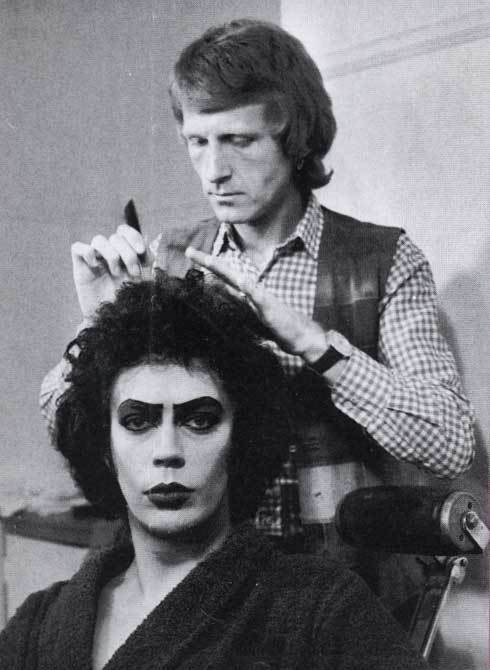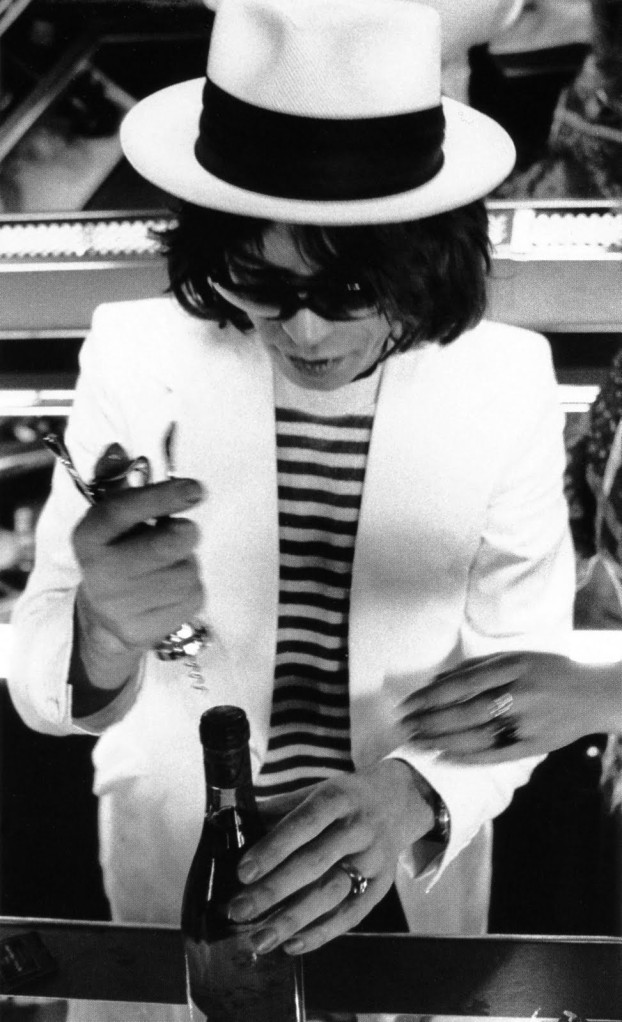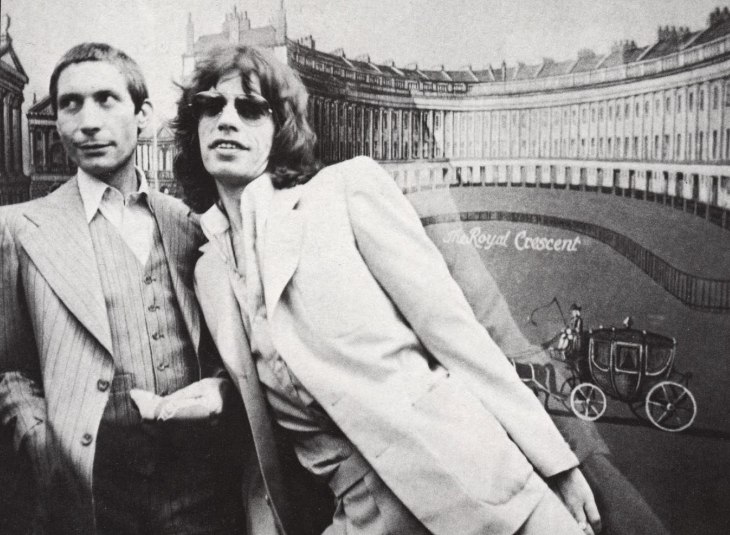 Pierre Laroche photographed by Brian Duffy, 1973
Pierre Laroche photographed by Brian Duffy, 1973
 Tim Curry and Peter Robb-King (assistant makeup artist to Pierre La Roche on The Rocky Horror Picture Show). In the stage productions, actors generally did their own makeup. However, for the film, the producers chose Pierre La Roche, who had previously been a makeup artist for Mick Jagger, to redesign the makeup for each character. Production stills were taken by rock photographer Mick Rock, who has published a number of books from his work.
Tim Curry and Peter Robb-King (assistant makeup artist to Pierre La Roche on The Rocky Horror Picture Show). In the stage productions, actors generally did their own makeup. However, for the film, the producers chose Pierre La Roche, who had previously been a makeup artist for Mick Jagger, to redesign the makeup for each character. Production stills were taken by rock photographer Mick Rock, who has published a number of books from his work.
 The astral sphere make-up on Bowie’s forehead was designed by Laroche for the Ziggy Stardust persona. Ziggy’s make up on stage also had a lot of Kabuki influences.
The astral sphere make-up on Bowie’s forehead was designed by Laroche for the Ziggy Stardust persona. Ziggy’s make up on stage also had a lot of Kabuki influences.
 David Bowie, rare outtake from Aladdin Sane photo session by Brian Duffy, 1973
David Bowie, rare outtake from Aladdin Sane photo session by Brian Duffy, 1973

 Make-up for Life on Mars? music video (Mick Rock, 1971)
Make-up for Life on Mars? music video (Mick Rock, 1971)

 Pin Ups (1973), the seventh album by David Bowie, containing cover versions of songs. The woman on the cover with Bowie is 1960s supermodel Twiggy in a photograph taken by her then-manager Justin de Villeneuve. It was taken in Paris for Vogue magazine, but at Bowie’s request, used for the album instead
Pin Ups (1973), the seventh album by David Bowie, containing cover versions of songs. The woman on the cover with Bowie is 1960s supermodel Twiggy in a photograph taken by her then-manager Justin de Villeneuve. It was taken in Paris for Vogue magazine, but at Bowie’s request, used for the album instead
 Mick Jagger put himself on the hands of Laroche during the Rolling Stones Tour of the Americas, 1975. Photo: Christopher Simon Sykes
Mick Jagger put himself on the hands of Laroche during the Rolling Stones Tour of the Americas, 1975. Photo: Christopher Simon Sykes
 Mick Jagger leans on his stylist Pierre Laroche during the Rolling Stones Tour of the Americas, 1975. Laroche wears a t-shirt with the slogan ‘Who the Fuck is Mick Jagger?’ Photo by Christopher Simon Sykes
Mick Jagger leans on his stylist Pierre Laroche during the Rolling Stones Tour of the Americas, 1975. Laroche wears a t-shirt with the slogan ‘Who the Fuck is Mick Jagger?’ Photo by Christopher Simon Sykes
Following a lonely childhood in exotic Algiers, Pierre Laroche moved to France and then England, where he became the star make-up artist at Elizabeth Arden in London. Quitting after five years when the company insisted he become more conservative, Laroche went freelance and was soon contracted by rock stars David Bowie and Mick Jagger, who drew upon Laroche’s talent while he continued to do make-up for British fashion magazines, celebrities, and movie stars. During the sixties, inspired by the Arab women of his homeland who painted their eyes black with khool, Laroche popularized black eye-shadow and originated the glitter look. Later, he moved to America, where he reorganized his professional approach to include make-up for all kinds of women—and men. Though he recently did Bianca Jagger’s make-up for the cover of People magazine, Elsa Peretti’s make-up for Helmut Newton’s photograph of her in the April 4 issues of Newsweek, and has worked with Nona Hendryx on major make-up projects, Laroche is equally interested in designing make-up for the “average woman”. Intent on contributing to the American chic, Laroche asserts, “I have lived through the sixties in England. Now I’m getting ready to face the eighties in America.”





























